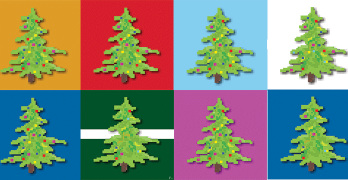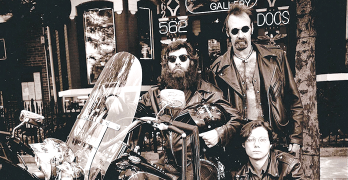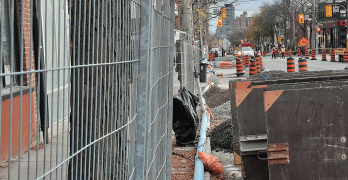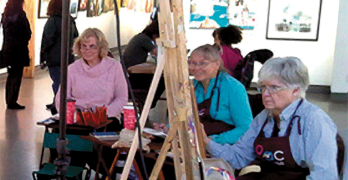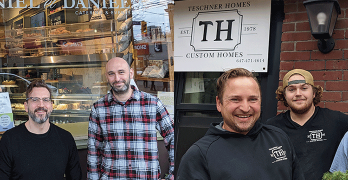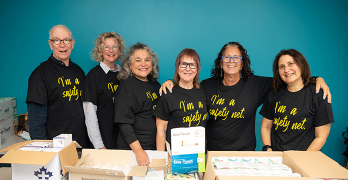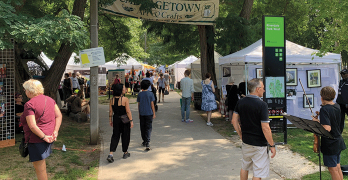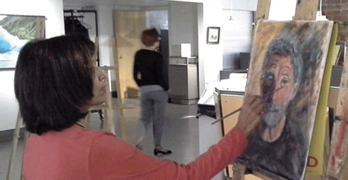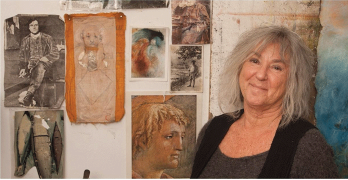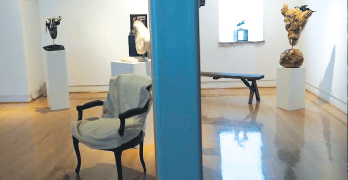The Royal Canadian Curling Club (the Royals), hidden at the end of a narrow alley at 131 Broadview Avenue, is a gem whose storied past is known only to a few of its devoted enthusiasts. Committed to presenting its history to the public as part of its 125th Anniversary celebrations this year, the Royals has installed an exhibition of historic trophies and didactic panels that trace its evolution.
Today, the Royals is dedicated to the sport of curling, but it was not always so. Back in 1891, when the club was incorporated, it was known as the Royal Canadian Bicycle Club. The arrival of the first penny-farthing bicycle in Montreal in 1876 marked the beginning of a cycling craze that swept across Canada, and the Royals was among the many clubs that sprang up and encouraged bicycle touring and road racing. Recognizing an increased interest in cycling, the Dunlop Tire Co. sponsored a twenty-mile road race that ran from the Woodbine Racetrack up Kingston Road and back. The Royals won the race nine times and took home two of the races’ finest prizes. Two consecutive wins in 1895 and 1896 earned them permanent possession of the race’s first, over six-foot high, silver Dunlop Trophy that now sits proudly in the entranceway of the club. With two more wins in 1898 and again in 1899, the Royals took permanent possession of the equally impressive Dunlop Shield which, thanks to recent restoration efforts, now hangs prominently in the club’s dining room.
By the early 1900s, interest in cycling was waning and the club began encouraging participation in alternate sports including bowling, baseball, lawn bowling, and soccer. In the fall of 1903, the Royals joined the twelve-team Toronto Bowling League (“TBL”), which they dominated, winning the first three annual championships. The Royals also won the City League championship in six successive years which resulted in the prized Brunswick Balke Co. Cup, becoming the permanent property of the Royals. A new clubhouse was built in 1906, and included “Royal Alleys,” which contributed to the exceptional success of their bowling teams during the first decade of the 1900s.
By the late twenties, it became clear that the Royals had to again re-focus its attention on different sports activities to attract a new membership. To this end, an ice rink was erected behind the clubhouse that would support curling, skating and hockey. The 85’ x 162’ rink accommodated six curling sheets and clubhouse improvements included a glass-fronted observation lounge, lockers for both men and women, and a cafeteria. This was an expensive venture, costing the club over a million dollars in today’s currency. The Globe and Mail praised the rink “as one of best of its kind in Canada.”
Toronto’s Mayor Sam McBride threw the first two curling stones at the official opening of the Royals’ first curling season on December 18, 1929. He was delighted when his first rock went through the rings (called “the house”) and smacked against the opposite end of sheet. When it was explained to him that the object of the game was to land the stone in the rings, McBride adjusted his weight and threw a “fine tee high shot.”
Gradually, as more hockey arenas were erected in Toronto, the Royals rink became devoted exclusively to curling. Though its focus for many years was on men’s curling, the Royals led the way in establishing both mixed and ladies curling. It was home for two significant firsts: the first SOLCA Business Girls Trophy Championship in 1962 and the first National Mixed Championship in 1963.
Today, the club is active from October to April, hosting leagues for men, women, mixed, LGBT and low-vision curlers. The Royals exhibition is open every weekday evening and will be open for Doors Open Toronto on May 27-28. To inquire about membership, please visit rccc.on.ca.
Contributed by Cynthia Waye

